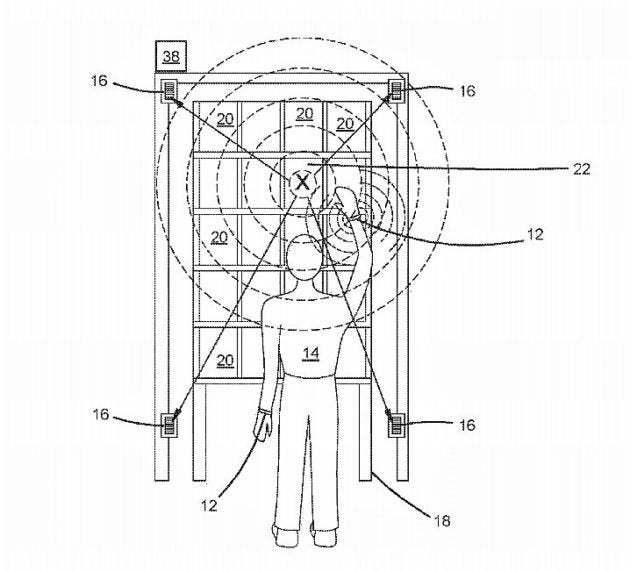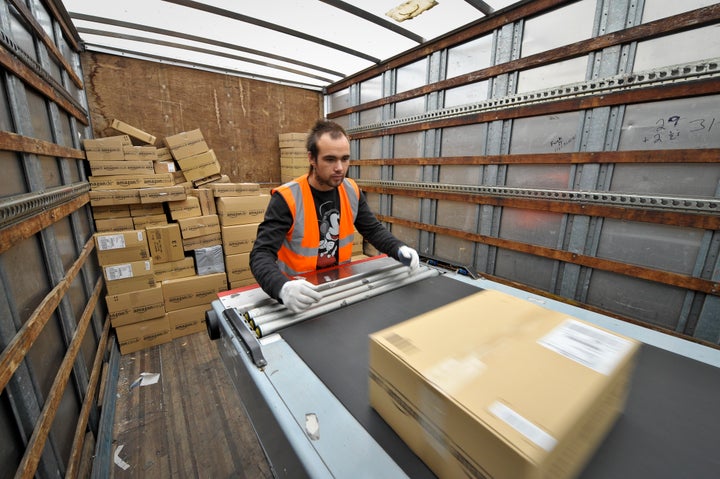Amazon has been granted a patent for an electronic wristband that employees could have to wear while they are working, to ensure they are doing their job correctly.
The official patent documentation, discovered by Geekwire, seems to move us a step closer to a dystopian future of human-robot hybrids, explaining the device would simply help people perform their jobs more “efficiently”.

The Seattle-tech giant was finally awarded the two separate patents after originally filing for them in 2016. Invented by Jonathan Evan Cohn, in Massachusetts, USA, the bracelet comes in three parts.
Made up of an ultrasonic unit for the wrist, various ultrasonic devices placed around the work area and a module to manage all that data, the idea is that it will monitor employee hand movements.

Correlated to inventory bins (that employees need to put items in), if they reach for the wrong bin they will be notified by a small buzz.
It could also potentially be used to notify them of break times and helping them find items in the warehouse via an Apple-navigation style tool.
And for centres that are storing upwards of 1.7 million products - such as the UK-based one in Rugeley, Staffs - and have a constant influx of temporary staff, a little help finding things might be useful.
Although with staff at Amazon’s flagship stores working ten hour shifts with one strict 30 minute break, the prospect of using the wristbands to monitor all employee behaviour (bathroom breaks, chatting to coworkers) doesn’t seem too far fetched.

At the moment the patent is just that, a patent. And it only applies in the USA.
Although Amazon have not made any steps to indicate they will be introducing this tech just yet, it is now more of a possibility than ever before.
An ACAS spokesperson told HuffPost UK about how this could apply in the UK: “New policies or changes that could greatly impact workers should be agreed between employers, staff and unions or staff representatives.
“Employers should also be mindful of certain requirements of the law that could apply to electronic surveillance such as The Human Rights Act, The Data Protection Act and the Regulation of Investigatory Powers Act 2000.”
The Human Rights Act 1998 Article 8 gives a ‘right to respect for private and family life, home and correspondence’. Case law suggests that employees have a reasonable expectation of privacy in the workplace.
The Data Protection Act 1988 covers how information about employees and job applicants can be collected, handled and used.
The Regulation of Investigatory Powers Act 2000 covers the extent to which organisations can use covert surveillance.
UPDATED 5 February. An Amazon spokesperson told HuffPost UK: “The speculation about this patent is misguided. Every day at companies around the world, employees use handheld scanners to check inventory and fulfill orders.
“This idea, if implemented in the future, would improve the process for our fulfillment associates. By moving equipment to associates’ wrists, we could free up their hands from scanners and their eyes from computer screens.”
